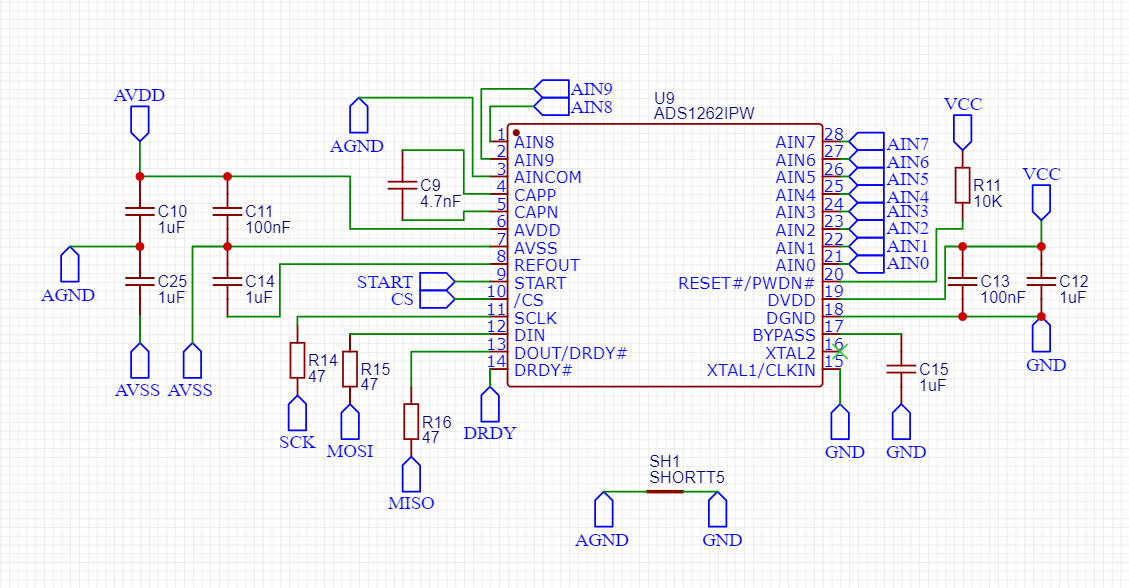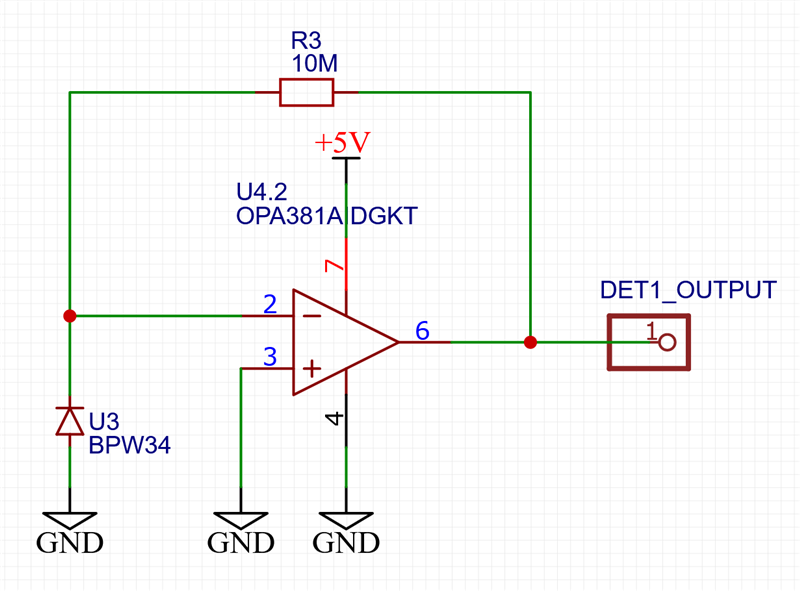Hi,
I have a problem with getting ADS1262 to work. The schematic of the ADC part of my device looks as follows:
The chip is powered up, START pin is held high by the MCR, bo I observe no pulse on #14 (DRDY). According to the datasheet, it should pulse @20Hz after startup with #20 (RESET/PWDN) and #9 (START) pulled up.
I observe the following voltages (all measures with the respect to DGND):
DVDD on C13: 4.54V with peak-to-peak ripple of ~170mV
BYPASS on C15: 1.91V (22mV ripple p-p)
AVSS on C14: -2.03V (180mV ripple)
AVDD on C11: +2.48V (80mV ripple)
REFOUT on C14: -1.97V (180mV ripple)
This chip also does not respond to SPI and the analog voltage supply lines are very noisy, but I think the lack of DRDY pulse is the core problem that should be solved beforehand.
Any ideas what's happening here?



